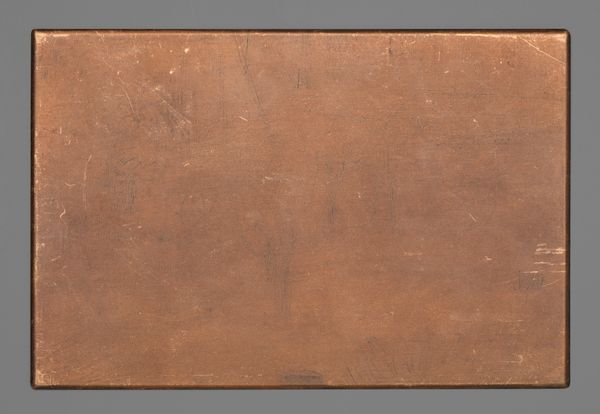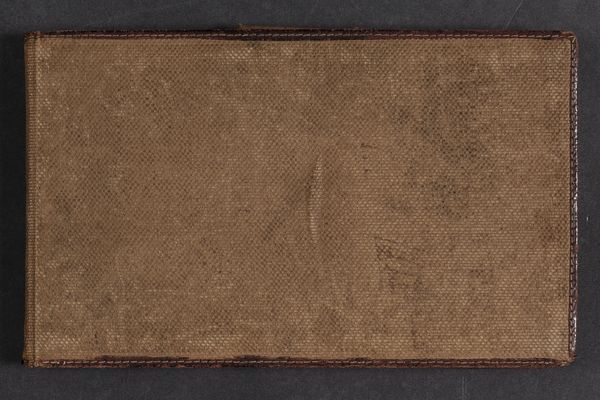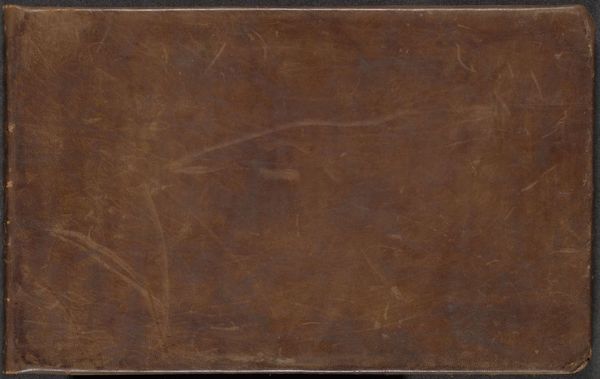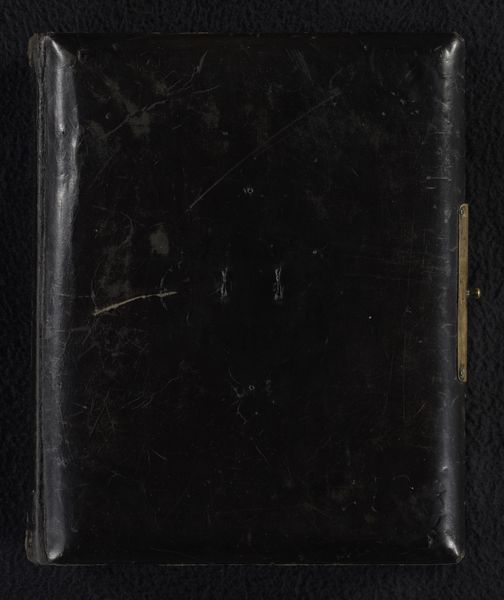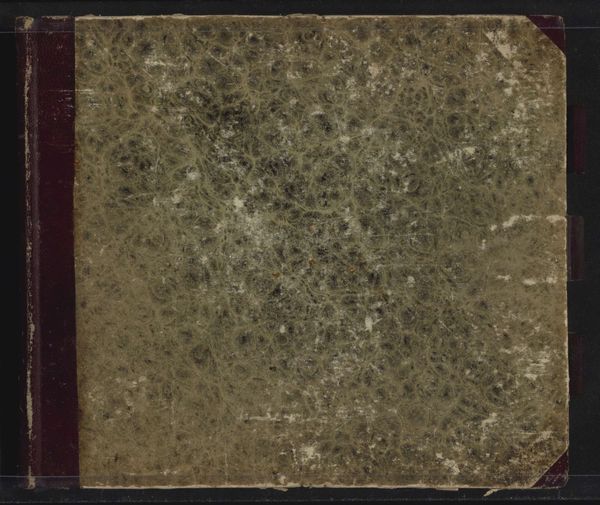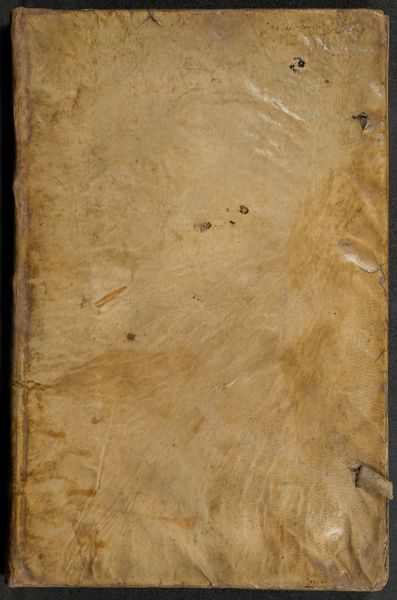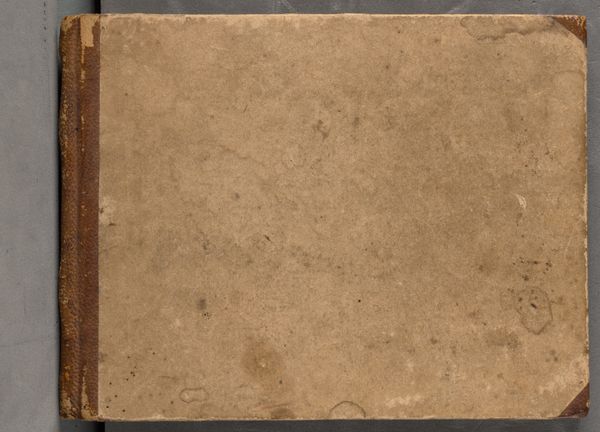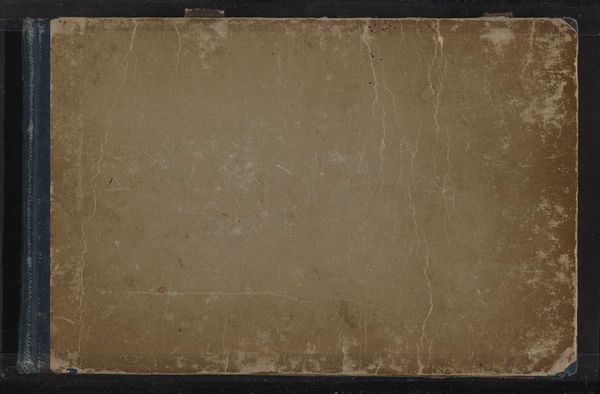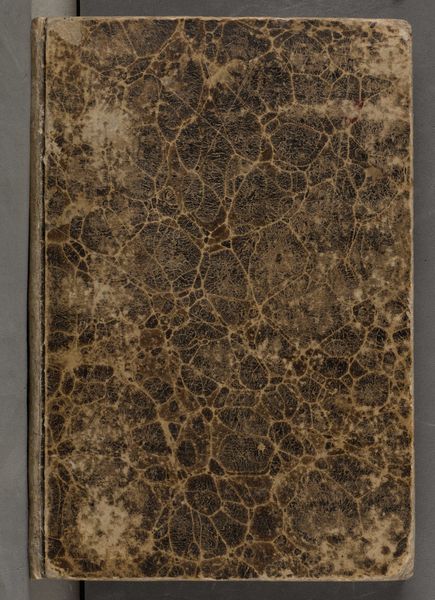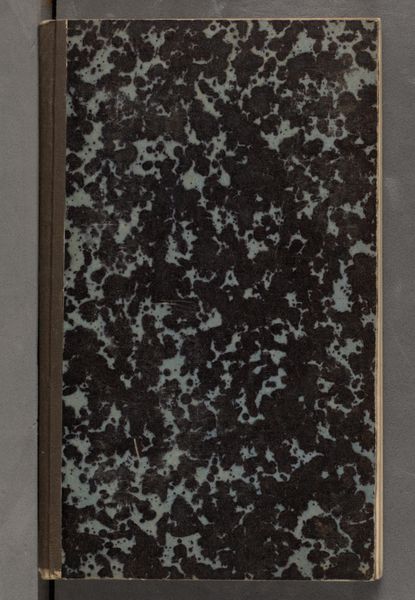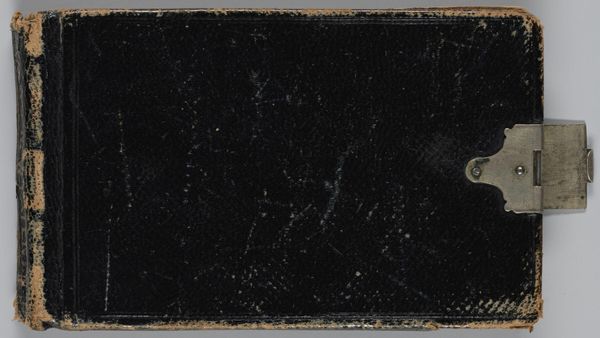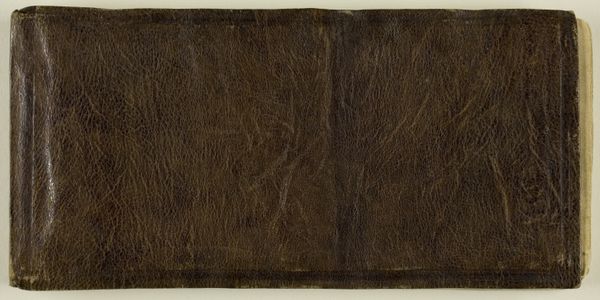
drawing, paper, ink, graphite
#
drawing
#
textured
#
landscape
#
paper
#
ink
#
romanticism
#
graphite
Copyright: Public Domain
Curator: Here we have a "Skizzenbuch", or sketchbook, dating from 1848, crafted by Karl Peter Burnitz. It features a series of drawings using graphite and ink on paper and it is part of the Städel Museum's collection. Editor: It looks so unassuming, almost secretive. The cover is dark, like a well-worn journal holding untold stories. What I immediately find interesting is the contrast between the rough texture of the cover and the expectation of the pristine drawings within. Curator: Exactly. The texture gives it away! What might appear as "merely" personal becomes quite revealing from a socio-historical standpoint. In 1848, Burnitz, like many, was working amidst immense political upheaval. This sketchbook hints at the personal reflections, observations of landscape that artists like Burnitz were making in the years leading up to the revolutions. How artists responded, recording, documenting, making social commentary. Editor: The symbolism is intriguing. A sketchbook, a private space for a very tumultuous historical moment. Landscape drawing offers a return to nature that rejects a return to violent conflict. Curator: True, but landscapes during this time are filled with complex meaning. The rejection of modernity versus longing for a connection to something timeless, and natural versus concern for rapid industrialization and expansion. And drawing--sketching--allows artists a method for gathering information quickly and easily. This act of quickly collecting "raw material" of the external world implies a political urgency not as evident within a formally composed history painting or carefully posed portrait. Editor: That's an important insight, it helps me understand the politics of this sketchbook, but thinking from the perspective of an iconographer, I consider the raw materiality. This book has survived revolutions, seen social upheaval, held secrets within its pages. This work can be seen as a vessel through time carrying messages that invite its interpreters into communion with another person, time and space. Curator: And perhaps in recognizing that continued importance through material means, the artist provides an archive, a historical object we're meant to unpack as interpreters! Editor: It encourages one to consider what is "disclosed" but also "hidden" from within. Curator: Agreed. I appreciate how a humble sketchbook unveils entire socio-political ecosystems through these visual seeds that invite future interpretations.
Comments
stadelmuseum about 2 years ago
⋮
The landscape sketchbook was most likely used by Peter Burnitz between January and July 1848 during a journey through Italy, which led him from Sicily to Norma, Cisterna di Latina, Cori, Genazzano, Segni and Valmontone in Latium and then to the French Côte d’Azur. As in the sketchbook documenting the first part of his journey to Italy, especially through Sicily in the winter of 1847/48 (Inv. SG 2360, Städel Museum), the young artist mainly sketched buildings and villages in wide coastal and mountain landscapes in pencil and captured views of paths and streets. Burnitz’s efforts to record his travel impressions in drawings is also reflected in this book in a number of close-up, sometimes very precise studies, which supplement the Mediterranean architectural and landscape views with drawings of characteristic details, for example detailed studies of greenery in front of houses or cyclopean masonry. Burnitz used a brush to colour in a subtle light brown only one of these drawings, some of which were quickly sketched, while some were more elaborate.For a full sketchbook description, please see “Research”.
Join the conversation
Join millions of artists and users on Artera today and experience the ultimate creative platform.

